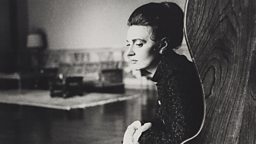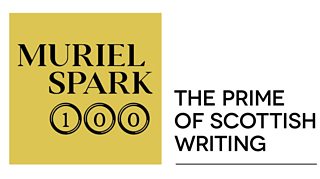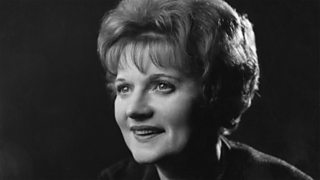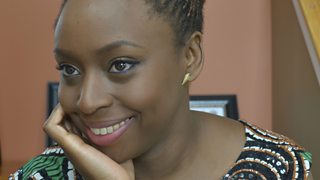Horses, hoarding and haute couture: The surprising world of Muriel Spark
17 January 2020
Muriel Spark is best known for The Prime of Miss Jean Brodie but there was much more to her than that. From royal racehorses to nuns in designer dresses, here are ten things you may not know about the crème de la crème of twentieth-century novelists, written by her friend Alan Taylor.

1. Miss Jean Brodie was based on Spark’s inspirational teacher

Maggie Smith in The Prime of Miss Jean Brodie, 1969 | Getty Images
Spark’s inspirational teacher at James Gillespie’s School for Girls, Miss Christina Kay, was a spinster who was as likely to talk about her own personal life as she was the subjects on the curriculum. It was Miss Kay, for example, who admired Mussolini and all things Italian and who took Spark, then ten or eleven, to watch Pavlova dance and hear John Masefield, then poet laureate, read his verse. It was Miss Kay, too, who talked of being in her ‘prime’ and who called her favoured students ‘the crème de la crème’.
2. She was a great lover of animals and once bought a horse from the Queen

Queen Elizabeth II attends the Royal Windsor Horse Show in Home Park on May 2017 | Getty Images
Spark especially loved cats and often compared herself to one. When embarking on a new novel she would wait until she had done the necessary research then she would ‘pounce’. She also owned racehorses, at least one of which she co-owned with Maurice Macmillan, the son of former prime minister Harold Macmillan. It was called Lifeboat and it was bought from the Queen. It was not often – if ever – seen in the winner’s enclosure.
3. Graham Greene sent cheques and wine when she was an unknown writer

Graham Greene (right) sitting on the floor with a glass of wine, along with English film director Carol Reed (The Third Man (1949); Oliver! (1968)) | Getty Images
Long before Spark became famous she was sent regular cheques by Graham Greene, who, with Evelyn Waugh, was one of her earliest fans. Greene also sent her bottles of wine, "to take the chill off cold charity".
4. The one word which defines Muriel Spark is ‘nevertheless’

When Spark was growing up in the 1920s and '30s, she often heard 'nevertheless' pronounced ‘niverthelace’. She wrote, "I believe myself to be fairly indoctrinated by the habit of thought which calls for this word," she wrote. "In fact I approve of the ceremonious accumulation of weather forecasts and barometer readings that pronounce for a fine day, before letting rip on the statement 'nevertheless, it’s raining'. I find that much of my literary composition is based on the nevertheless idea."
5. Her family name was Camberg, not Spark

Matchbox, SOS Cafe | Getty Images
Muriel Camberg acquired her surname by marrying a man many years her senior called Sydney Oswald Spark. It was not a happy marriage. In hindsight, Muriel said she should have realised by his initials that her husband was not the man for her. He had wooed her by taking her flowers when she was unwell. Thereafter, she advised, "Beware of men bearing flowers".
6. Spark and birth control pioneer Dr Marie Stopes became enemies

Dr Marie Stopes in 1941 | Getty Images
After the Second World War, Spark lived in London. One of the jobs she had was at the Poetry Society, of whose magazine she was editor. In her efforts to promote and publish younger, more ambitious and serious poets she made a number of enemies, prominent among whom was Dr Marie Stopes, famous for her pioneering work on birth control. In her autobiography, Curriculum Vitae, Spark wrote: "I used to think it a pity that her mother rather than she had not thought of birth control."
7. Spark used to give designer dresses to the local nuns in Tuscany

In Tuscany, where she lived for the last thirty years of her life, Spark used occasionally to give the local nuns designer dresses which she herself no longer needed. The nuns wore them beneath their habits. When of an evening they took a stroll past Spark’s house, her two large and rather frightening dogs, allowed out of their kennels to run wherever they pleased, charged at the terrified nuns, mistaking them for their mistress.
8. Spark kept every scrap of paper that came her way

Muriel Spark c. 1985 Copyright © Jerry Bauer
For more than fifty years Spark kept every scrap of paper – shopping receipts, travel tickets, restaurant bills, letters, faxes, notebooks, you name it – that came her way. This incredible archive is now housed in the National Library of Scotland. By keeping such a record, she said, she hoped it would allow future scholars to distinguish fact from myth and misinformation. “Lies," she once wrote, "are like fleas hopping from here to there, sucking the blood of the intellect."
9. She did not write her first novel until she was nearly forty, and Miss Jean Brodie was completed in eight weeks

The Comforters was published in February 1957. Up until that point Spark always regarded herself as a poet, having been described as a “Poet and Dreamer” at her school in Edinburgh, where she was born in 1918. Incredibly, her first six novels were written in as many years, between 1957 and 1962. She wrote The Prime of Miss Jean Brodie in just eight weeks.
10. Spark used notebooks from an Edinburgh stationer to inspire her writing

How I write, by Muriel Spark
Interview with the author in which she describes her writing process.
Proust had his petite madeleine, cake which when dipped in tea brought the past flooding back. Spark’s equivalent was a notebook, especially those bought from an Edinburgh bookshop and stationer called James Thin. Whenever she was stuck for something to write she would go to her stock of notebooks, pull out a new one, and the words would begin to flow.

Alan Taylor: Appointment in Arezzo
A version of this article was originally published for Muriel Spark 100 in January, 2018.
Alan Taylor was a friend of Muriel Spark's for many years and his memoir of their friendship, Appointment in Arezzo, was featured on Radio 4's Book of the Week to accompany the Spark centenary in early 2018.
-
![]()
Muriel Spark 100
Celebrating one of Scotland’s finest and most respected writers
Muriel Spark 100
-
![]()
Muriel Spark's centenary on the BBC
Programmes and features celebrating the author's centenary.
-
![]()
Who was Miss Jean Brodie?
Cerys Matthews searches Edinburgh for the key to Muriel Spark's unconventional teacher.
-
![]()
Haute couture, horses and hoarding
The surprising world of Muriel Spark, by friend and biographer Alan Taylor.
-
![]()
Great writers recommended
Muriel provides the spark to recommend great writers you will #LoveToRead.





